Jane Friedman's Blog: Jane Friedman, page 165
March 21, 2014
5 Valuable Charts That Show How Publishing Is Changing
One of my favorite social media activities is collecting charts and visual data related to book publishing and other media, which come in handy for speaking at conferences and providing insight into how the industry is changing.
I use Pinterest to save them; view or follow the board here. Here are 5 of my favorite charts pointing to the evolution of the industry.
Source: Bowker’s Books & Consumers US; find our more about this report at Digital Book World. If anyone has seen 2013 figures, please let me know in the comments.
Key takeaway: By the end of 2012, nearly half of US book sales (print + ebook) were happening online (eCommerce), which is primarily driven by Amazon. Notice how the large chain bookstore retail share drops from 31.5% to 18.7%, driven in part by the bankruptcy of Borders. While many people focus on the percentage of ebook sales (currently averaging about 30%), I’d argue it’s more important to keep tabs on where the majority of sales are happening, regardless of format. This directly affects the value proposition of traditional publishers (at least for now) and how books get discovered and/or purchased—increasingly online through tech giants such as Amazon, Google, Apple, etc.
Source: Nielsen Bookscan, 2004–2013, reported on by Publishers Marketplace (subscription required).
Key takeaway: This chart shows print sales (in units) in the US print book market, which peaked in 2008-2009. In a 2014 presentation, Nielsen discussed how nonfiction adult sales peaked earlier, in 2007—but that children’s book sales are still ahead of their 2007 levels and comprise a larger part of the print market, meaning physical stores are important to that market (more so than adult books), and/or haven’t as successfully transitioned to digital.
Source: Pew Internet Surveys, 2006–2013
Key takeaway: Mobile- and tablet-based reading environments already play—and will continue to play—an increasingly important role in how people discover, purchase, and consume content. Also notice that ebook readers are the least popular “gadget” on this chart; many people disagree on whether this will remain stable or decline. (Some say avid readers will always prefer a dedicated device; my personal opinion is that all dedicated reading behavior will shift to tablets or phones). Whether you have a website, e-mail newsletter, book, magazine—anything—to be successful for the longterm, you must consider the growing percentage of mobile- and tablet-based users. (Obviously, this is a much bigger trend affecting every business and organization.)
Source: HarperCollins presentation to News Corp.; reproduced at Publishers Marketplace
Key takeaway: E-books are significantly more profitable for publishers than print books, primarily because Big Five ebook royalties remain at 25%. Publishers Marketplace comments, “On a hardcover, the author earns 30% of the publisher’s gross revenue, and 42.5% of the total margin (what the author and publisher together earn). For now, on the ebook, the author earns 25%.” Read more (subscription required). The big question, of course, is how long can publishers keep the royalty rate at 25%? Hugh Howey has been asking this question, very publicly, over at AuthorEarnings.com.
Source: Nielsen white paper from January 2012
Key takeaway: There is an unsurprising link between good metadata and sales. This particular report shows how complete metadata gives a sales boost to all book categories, but especially fiction, probably because fiction titles benefit from additional contextualization to aid searches. (If you’re looking for a nonfiction book on rose gardening, you can probably find it based on title and category; if you enjoy novels that take place in Europe in the 19th century, you’ll have a harder time unless that context is included in the metadata.) At BEA 2013, I listened to a panel on metadata, and the most memorable quote was from Phil Madans of Hachette: “If you don’t want your books to be found ever, use the Fiction: General category as your BISAC code.” For authors, this means: Don’t ever publish and distribute a book categorized as “general fiction.”
Do you have interesting charts or graphs to share about what’s happening the publishing industry? Share links in the comments.
To learn more:
I’m speaking at the Virginia Festival of the Book this weekend in Charlottesville, VA—free and open to the public. My talks will be on the digital publishing landscape, author platform strategy, and why romance authors are so good at marketing.
If you enjoyed this post, you’ll love my Pinterest board devoted to media industry stats.
Subscribe to my new digital magazine, Scratch, which focuses on the business end of writing and publishing.
The post 5 Valuable Charts That Show How Publishing Is Changing appeared first on Jane Friedman and was written by Jane Friedman.
March 20, 2014
The Ether Is Moving to ThoughtCatalog.com
Table of Contents
“When the industry looks out of the window”
Jane Friedman: Porter’s Brain
My Fellow Millennials
“When the industry looks out of the window”
You know me. I’d just amend Tom Chalmers‘ good line this way:
When the industry! the industry! stops the internal debate and looks out of the window, it will realise who will make or break them: the customer.
I’m not sure it was 134 Ethers ago exactly. But not long after I gratefully began piling onto Jane Friedman’s site here each week with Writing on the Ether, I started using the industry! the industry! to refer to folks whose interest in the digital disruption seemed to be more about the business than the books.

Tom Chalmers
And, as Chalmers’ Book Industry Too Busy Playing With the Wrapping Paper at Digital Book World’s Expert Publishing Blog indicates, there are a lot of people still obsessed with…the industry! the industry!
Ironically, many of those folks are the same ones who are having to hustle to meet the readers.
Granted, Mike Shatzkin has assured us this week that It is not news to publishers that they have to engage directly with their readers.
This is good to hear. Also, interesting that at this late date, Shatzkin finds he must headline a piece so, isn’t it? Perceptions are so much of the game.
The UK’s Chalmers is the founding managing director of IPR License, an international literary-rights-licensing platform. He’s been making interesting noises at The Bookseller’s The FutureBook bloggery for some time, as well as at Frankfurt Book Fair’s Publishing Perspectives, home to Issues on the Ether and our weekly associated #EtherIssue weekly live tweeterie.
In this latest essay at DBW, Chalmers turns up just in time to help me explain to you what I’m doing with the Ether. And he says it several useful ways.
For example, there’s the generational concept:
Why has U.S. contemporary fiction been stronger than UK contemporary fiction over the last century? Because each reading generation has claimed books, rarely the most backed, as their own, as meaning something to and representing their generation.
And then there’s the process-protection element (“we’ve always done it this way”), emphasis mine:
If we spent less time bothered about the wrapping paper, we would have more resource and focus on finding and nurturing the best new work. In publishing, we fill slots. In the other creative industries, fashion for instance, buyers look to create new trends themselves, often creating from scratch, rather than trying to follow them. First is everything.
And, there’s this forceful outward understanding from a man who daily sees the vast breadth of the international trade markets and the sheer power of digital’s ability to array your content across them:
When it comes to finding the best quality new work, we are far too limited in where we search. Same territories, same agents, same old story. There are brilliant books, so diverse it’s impossible to even find an analogy, being published all over the world, infused with the culture they are written in but also ready to be embraced by an enraptured worldwide audience.
“An enraptured worldwide audience.” Hold that thought.
Jane Friedman: Porter’s Brain
No matter how many times Jane or I may talk to you here online or in conference settings or over coffee, you can hardly find a better example of what we mean when we say “networking” than the Ether.

Jane Friedman
Jane and I met online. On Twitter. We’re that story. We met en réalité at a Writer’s Digest Conference, back when men were men and women went to conferences. (Such a better gender balance at conferences now, I cannot tell you, it’s great.) We found ourselves quickly on the “confab bus,” seeing each other at these events.
I was discovering (this was in 2011) the need for the live coverage I do now as a service of my consultancy, Porter Anderson Media, from many conferences in many countries. I was learning that I could adapt one of my former CNN.com control-room activities to the needs of the publishing world for quick exchanges of ideas and commentary. Jane was formulating beautifully targeted and insightful understandings of the author’s presence online.
Jane’s invitation to me to create what would become the Ether here on her pages was a direct outcome of our having met, cultivated, and committed to what has become one of the great friendships and collegial events of my career. If you think that Twitter and the other social media—still a plural word, damn it, one medium, two media—are simple billboards on which you’re to plaster your sales pitches to your publishing buddies, you’re wrong and way late in getting right.
And while I’m now moving this gathered effluvium called the Ether to a new, the truth of digital is that I’m not going anywhere. (And you thought you were getting rid of me. Ha!)
Jane and I will continue to work together on many projects. Frankly, I don’t know how she’ll get along without my maddening cries for help with some utterly ridiculous WordPress conundrum at 2 in the morning. I like to reserve my most catastrophic online errors for the wee hours to heighten the rawness of the alarm.
She is the Jane Friedman, by the way. Don’t miss her interview with that lovely pretender to the name, Jane Friedman, in the new issue of her and Manjula Martin’s superb new Scratch Magazine. And subscribe to that thing, don’t make me have to send out the Ether stationwagon to pick you up.
As I shove off here for new terrain, I lift my Campari to the Ether-eal Jane Friedman, with profound appreciation for her energy, support and networking diligence. She is the best thing to happen to a lot of us in publishing.
My Fellow Millennials
Do you know ThoughtCatalog?
 Launched in February 2010, ThoughtCatalog.com, a property of Thought.Is, is not—and this is the point—a publishing-industry medium. It’s known, not without controversy, as a hub of self-expression for writers whose perspective and purview skew quite young.
Launched in February 2010, ThoughtCatalog.com, a property of Thought.Is, is not—and this is the point—a publishing-industry medium. It’s known, not without controversy, as a hub of self-expression for writers whose perspective and purview skew quite young.
Ich bin ein millennial. I’m just not telling them which millennium.
Some of today’s headlines at Thought Catalog are:
The Idea of Mindfulness Is a Really Simple Idea by Marco Yellin
First Tweets from 42 Weird Twitter Accounts That You’re Probably Following by Michael Koh
Damsel in Distress: What Disney is Really Teaching Our Daughters by Stephanie Mallozzi
There’s also The Power of Spoken Word Poetry from Mehroz Baig.
And This is Why It’s So Hard To Get Published (And It’s Not Amazon’s Fault) by Lucy Leiderman.
And The 10 Worst Boyfriends In High School Literature by Ella Ceron.
And What To Do When You Fail: How I Handled Blatantly Losing the Amazon Breakthrough Novel Award Contest by Abby Rosmarin.
And there’s also Long Reads & Digital Books: Thought Catalog is publishing.
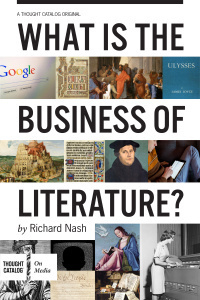 One of them is our ingenious friend Richard Nash’s superb What Is the Business of Literature? as a single. You might remember reading the essay at Jane’s Virginia Quarterly Review? Now, it’s yours as an ebook. (And the price is awfully reasonable.)
One of them is our ingenious friend Richard Nash’s superb What Is the Business of Literature? as a single. You might remember reading the essay at Jane’s Virginia Quarterly Review? Now, it’s yours as an ebook. (And the price is awfully reasonable.)
Thought Catalog is the creation of Chris Lavergne, one of the most interesting of the wunderkind entrepreneurs, a guy whose compass looks set resolutely on developing cultural journalism in a way he refers to as “both conscious and natural.”
That’s how he explained it in an interview with Matthew Newton for Forbes, Thought Catalog and the New Age of Confessional Media.
And in the two years since that interview came out, Thought Catalog has grown to rank frequently among the top 50 or 60 Web sites in the world in traffic. It’s consistently tracked by Quantcast as larger than CNN.com, TheGrauniad.com (typo intended), Time.com, and Gawker.com. It’s right in there, traffic-wise, with the New York Times, USMagazine.com, Apple.com.
This is many eyeballs. Reading eyeballs. And that’s the point.

Chris Lavergne as pictured at Forbes
At one point, Lavergne and I went over procedural details, as you do when settling in at a new medium. His site’s clean, elegantly text-driven design is busied up daily with a level of international advertising that would make a lot corporate suits cry. But he doesn’t lose sight of what means the most to him in this work: these voices in their astonishing variety, the writing.
I told him that for a writer, that emphasis makes moving the Ether to Thought Catalog feel like coming home.
And I want to take a moment here to say my special thanks to a genuine friend and clear-eyed associate, Jason Allen Ashlock, a consultant’s consultant.

Brian O’Leary
In Brian O’Leary’s essay for The FutureBook, Publishing has entered a new and different era, O’Leary captured the structural adjustments rocking that doubly wailing industry that once seemed so stable:
The internet shifts traditional publishing from a gatekeeping role, deciding what will be published, to a truer form of curation: managing the communities and conversations that may ultimately inform a rendered component.
O’Leary asks us to get past “debating the future of our prevailing supply chain” and to consider what it means when “readers look to customize their own content consumption…Boundarries between ‘types’ of publishing will blur,” he writes, challenging “the notion of what a book is and can be.”
We must be about that business.
Having chewed each other’s legs off for so long, it’s time for the publishing community in its digital dance to face outward, turn to the audience, look them in the eyes. Because if we do it only for each other—for the industry! the industry!—then we’ve forgotten the mission. It never was for each other. Literature is for the world at large. It belongs to them. What we do belongs to them. In some way, we belong to them.
It might be a good idea to fill them in on it now, you think?
Dont worry. You escape nothing.
As things get under way at Thought Catalog, you’ll be able to find my work here .
You’ll continue to find me at The Bookseller each Monday with a #PorterMeets live newsmaker interview and on the stands in London each Friday with a writeup of that interview.
And you’ll find me at Publishing Perspectives each Tuesday with an Issues on the Ether column an #EtherIssue live discussion on Wednesdays.
And you’ll find me performing my usual intensely irritating “Provocations in Publishing” arias at Writer Unboxed .
You’ll also find me at just about every conference event known to modern man or woman, of course.
And you can always check up on me at PorterAndersonMedia.com.
Chalmers talks of getting out into the world to find the writings we need now:
Take Haruki Murakami…was a small-city man living in southern Japan and now is read all over the globe, regularly described as the world’s greatest living writer. Let’s widen our search, as we are now technically capable of doing, and find many more writers of Murakami’s brilliance.
I think the journalist’s job in all this is to talk to both sides of that widening search. I couldn’t be more excited about the chance to hear what comes back when we ping the wider world. And I expect every one of you Ethernauts to be suited up with us as we go deeper into the digital dare: I’ve got a feeling we like these people.
There’s not enough bourbon in the world, Jane. Thank you.
Main image – iStockphoto: fabiocam
Stop saying you're "reaching out" to me like it's some noble gesture. It's just an email for Pete's sake.
— Don Linn (@DonLinn) March 18, 2014
BEA uPublishU AUTHOR HUB: Not a Drop-In Lounge
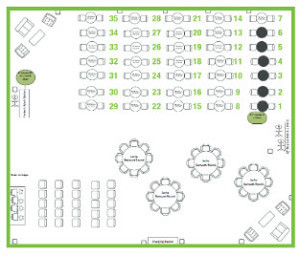
The uPublishU AUTHOR HUB on the floor of BookExpo America’s trade show features a presentation area, networking tables, comfortable sofas and a receptionist.
It’s designed as a working base of operation for the exclusive use of its 160 members. And we’d love you to grab a space alongside our charter headliners in BookExpo America’s all-new uPublishU Author Hub for entrepreneurial authors: Bella Andre, Barbara Freethy, Hugh Howey, CJ Lyons and H.M. Ward.
Network with these writers and other publishing players on the trade show floor.
Basic membership ($599) includes your BEA badge, uPublishU Conference access, the New Title Showcase, BEA Show Planner, and Mobile App listings. Premium membership ($1,200) gives you a dedicated meeting table and chairs in the Hub and a BEA Autograph Signing session.
For info and registration, contact Fred Evanko: 203-840-5965 or fevanko@reedexpo.com
The post The Ether Is Moving to ThoughtCatalog.com appeared first on Jane Friedman and was written by Porter Anderson / @Porter_Anderson.
March 13, 2014
And If the Readership Pulls in Different Directions?
Table of Contents
Wait a Minute. Where Are We Going?
‘Bifurcation’ of Publishing: And of the Readership?
Live #Vook Twitter Chat Today:
More Author Control of Book Sales Tracking Than Ever
“Crisp graphics and a user-friendly interface make Vook’s new sales tool shine!” – CJ Lyons, Million Kindle Club bestseller and a BookExpo America uPublishU Author Hub headliner at #BEA14
 Vook’s @MattCavnar joins us for a live Twitter conversation about this new suite of tools that puts industry-level sales-tracking power directly into the hands of entrepreneurial authors. Author Control follows and records not only new sales but your historical sales across Amazon KDP, Nook Press, Kobo Writing Life, Google Play, CreateSpace, iBooks and more…more personal, professional tracking power, in fact, than most traditionally published authors get from their publishers. Cavnar will fill you in and answer your questions—and you can track up to 10 books free of charge..
Vook’s @MattCavnar joins us for a live Twitter conversation about this new suite of tools that puts industry-level sales-tracking power directly into the hands of entrepreneurial authors. Author Control follows and records not only new sales but your historical sales across Amazon KDP, Nook Press, Kobo Writing Life, Google Play, CreateSpace, iBooks and more…more personal, professional tracking power, in fact, than most traditionally published authors get from their publishers. Cavnar will fill you in and answer your questions—and you can track up to 10 books free of charge..
Hash it #Vook and Jump in with us today (Thursday March 13) at:
11 a.m. ET / 3 p.m. London / 4 p.m. Paris / 8 a.m. PT
to learn more about Vook’s Author Control book-sales tracking suite.
Wait a Minute. Where Are We Going?
Mike Shatzkin handles blog whiplash better than most.
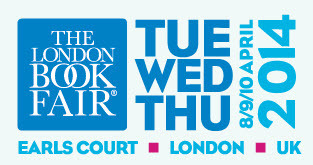 The sort of spunk he’s just shown this week makes it all the cooler that he’s going to be on London Book Fair’s Great Debate lineup on April 8 (11a-12:30p, Earls Court, Conference Centre Rooms 1 and 2). He’ll be joined by Ken Brooks of SVP Global Supply; Faber & Faber’s Stephen Page; Diversion Books’ Scott Waxlman Copyright Clearance Center’s Michael Healy, and chair Susan Danziger of Ziggeo—all of them bent on sorting out the proposition:
The sort of spunk he’s just shown this week makes it all the cooler that he’s going to be on London Book Fair’s Great Debate lineup on April 8 (11a-12:30p, Earls Court, Conference Centre Rooms 1 and 2). He’ll be joined by Ken Brooks of SVP Global Supply; Faber & Faber’s Stephen Page; Diversion Books’ Scott Waxlman Copyright Clearance Center’s Michael Healy, and chair Susan Danziger of Ziggeo—all of them bent on sorting out the proposition:
It’s Always About Size,. Bigger Is Always Better.
This is one of my favorite LBF events, and you’ll be most welcome, of course, to follow hashtag #LBF14 if you’re not able to join us in person.

Mike Shatzkin
Author’s warning: this post is largely wrong! The following post was written based on a fundamental misunderstanding, assuming that Mark Coker’s post was talking about ebook sales in units when he was talking about dollars.
Not quite the opener you expect from one of our senior statesmen of the regime, is it? Especially the fastidious Shatzkin, who could fisk the Protestant Reformation in 48 seconds flat, don’t tempt him.
But, lo, here it is. In Sometimes one more calculation can make what looked first like revolution resemble what it really is: evolution. (Mike’s headlines alone are worth the read.)

Mark Coker
We’re not going to spend much time on this particular post since, as Shatzkin tells us, it was actually based in a misreading of Smashwords‘ Mark Coker’s much-discussed Huffington Post listicle e recitativo, 10 Reasons Self Published Authors Will Capture 50 Percent of the Ebook Market by 2020.
But the first point here to be made is that Shatzkin did the responsible thing, and it’s an object lesson for the many bloggers I walk around kicking who don’t do this well.
(1) Shatzkin owned up to the mistake, big time. In one of the many comments on the piece, he is gallantly determined to apologize to Coker—who is generous in return, by the way Shatzkin promises to create a new post, which he does do.
(2) Shatzkin then leaves the errant post in place, fully marked, as you see above, for its inadequacies, but preserving a valuable comment chain and taking full responsibility for the initial confusion:
I am leaving it up because I have to admit to my errors (this is the first time in five years I have had to do this), and because there were some useful comments. (And who knows? We may get more.) I will write another post…reflecting on Mark’s [original article] in the next couple of days, this time giving observations based on a correct interpretation of what he says in his.
Clear, open, frank revelations of gaffes are the only correct course. They’re embarrassing but important if we’re to be able to trust each other in the dire debates of our digital indecorum.
So it is that while i may not always agree with Shatzkin’s positions on things, I can go to the mat here to say that the man knows how to take his mistakes and register them properly, and I appreciate this.
Really sorry about yesterday. Misunderstood @markcoker the first time. But got it right this time. http://t.co/HmJlns25cb
— Mike Shatzkin (@MikeShatzkin) March 12, 2014
Now, to his followup column and its messages for us.
In (another leggy Shatzkinian headline) Getting Mark Coker right this time and agreeing with him up to a point, Shatzkin’s course correction explains that Coker’s original story was talking about dollars, not unit sales (numbers of books sold). Coker’s basic assertion was this:
By my estimates, self-published ebooks will account for 50 percent of ebook sales by 2020.
The spreadsheet of estimates and projections he used (a la Hugh Howey’s AuthorEarnings.com reports) is available for download on the story and it’s there that it’s made clear that he, Coker, is talking dollars, not unit sales. But, as Coker, himself, volunteers in comments on Shatzkin’s first outing, the Huffington Post op-ed piece from Smashwords doesn’t make that distinction clear. Hence Shatzkin’s wrong assumption that unit sales were at issue, not dollars.
With that confusion sorted, Shatzkin is able to return to Coker’s piece and write this:
What Coker did was point out that the 15% ebook dollar share for indies was within the estimated 30% of the market that is ebooks, 70% still being print. Doing math with his share number, he concludes that self-published ebooks are taking 4.5% of the dollars in the overall market. I’d put them at somewhere between half and two-thirds of that.
So far, so good. Shatzkin and Coker are describing a smaller current standing of independently generated sales than some entrepreneurial authors would like to think is there, but they both allow for what Shatzkin refers to as “enormous growth in the number of indie-published ebooks we will see.”
I think a grain of salt is needed about how economically significant they will be either for the industry at large or for the vast majority of individual authors following that path even though they are bound to grow quickly.
In fact, with a nod to Howey’s AuthorEarnings.com work, he puts it this way:
Indie ebooks are not yet commercially important if we think about consumer dollars. (But, of course, as Hugh Howey and Coker point out, the author keeps a lot more of those dollars.)
And I like what I would describe as the mechanical questions he brings into the mix next, two of them:
(1) How fast will the indie self-publishing ebook market continue to grow at the expense of publishers who do it for profit? (All of the calculations from Coker and Howey about the benefits to indie authors assume they do it themselves, not through some new-fangled indie-first publisher or aggregator. If they do it through anybody else, new or old, the author share will decline. Every participant takes a cut.)
(2) For any individual author, how does the decision of whether to do it themselves or sign with a publisher look?
Guess where he’s headed: the bifurcation many of us are talking about.
Mark Coker prevede che nel 2020 il 50% dei libri sarà #selfpub .. ma i suoi 10 punti sono davvero ineluttabili? http://t.co/BL49xUz9Uw
— Lorenza Biava (@ElleBiava) March 13, 2014
‘Bifurcation’ of Publishing: And of the Readership?
I think one key question is whether we now have a bifurcated market: one group of people reading the bulk of indie books and another group reading the bulk of published books. … only the retailers really can know for sure.
Many of us are starting to suspect this is the case. This graphic created by Coker for his article as “Modeling the Rise of Indie Authorship” certainly won’t steer you far from the idea of two trains running.
[image error]
Mark Coker, Smashwords, from “10 Reasons Self-Published Authors Will Capture 50 Percent of the Market by 2020,” the Huffington Post
And many entrepreneurial authors like to boast of readers who choose to read “indie only.”
As Shatzkin speculates earlier in the piece:
If indie readers form a “separate” market, is it growing or is it static? In other words, do indie ebooks draw on a particular pool of readers, so that we have two separate competitions going on for eyeballs and ebook sales?
And later:
I believe we do have two markets. Part of that is genre-driven. Many readers who habitually consume romance, thrillers, and sci-fi have found less expensive digital-first and author-published alternatives perfectly satisfying. They read lots of units. So it is likely that a concentrated cohort of readers is responsible for a big chunk of the indie books.
And then, the kicker, a reason, in fact, that independent authors might not feel so cheery about the indie-only readers base they say has arrived:
If that is the case [that there are indie-only readers avidly feeding the indie-book community of authors], then indies [authors] compete with indies [their fellow authors] more than they do with publishers. And since we believe that a big part of indie sales growth will be driven by indie title growth, it could be that the sales will have trouble keeping up with the titles. That would mean the path to success for each individual indie author would get harder.
However you see the future of independent publishing on traditional—and however much of the proverbial “pie” we keep talking about may be taken home by self-publishing authors versus traditionally published authors—one interesting question to consider here is when does a “bifurcated” industry evolve into, basically, bifurcated competitions for sales. Or do they? Are we likely to see traditional-vs.-traditional competition and independent-vs. independent competition overtake traditional-vs.-independent competition?
It’s possible.
How many of our most successful self-publishing authors have told us about the pressure from readers to publish the next installment, the next chapter, the next book? “Give us the next book! Hurry up!”
We could see a day when a fairly stabilized community of self-published book readers finds themselves hounded instead by their authors, who exhort that audience to read faster. “You haven’t read my tenth installment yet! Hurry up!”
 Here’s a passage from Coker’s Huffington Post piece that Shatzkin does not get into: the anger of the authors. I’ll give the whole thing to you, this is his tenth and final point in the piece:
Here’s a passage from Coker’s Huffington Post piece that Shatzkin does not get into: the anger of the authors. I’ll give the whole thing to you, this is his tenth and final point in the piece:
Writers are angry. After centuries of living near the bottom rung of the publishing ladder, writers are feeling their oats and relishing their new-found independence. Writers are rejecting rejection. They know they no longer need to bow subservient to the whims of publishers. Writers are placing new demands upon publishers, asking for higher royalty rates on ebooks, faster sales reporting, faster payments, more transparency, more generous reversion clauses, more control over cover design and packaging, and more post-publication marketing support. Publishers are digging in their heels and labeling these demands as unrealistic. Writers are upset that several publishers have launched vanity publishing imprints powered by Author Solutions — imprints that exploit uneducated writers by selling them overpriced publishing services. Writers view sins against their writerly brothers and sisters as sins against all authors. In total, these perceived publisher transgressions are undermining the goodwill and loyalty that writers once felt toward publishers. If publishers are unable to close the rift, the deal flow of new authors will diminish and existing authors will defect.
This is all correct, from my own observations. I think Coker is capturing the tone here. I think the author corps and the publishing establishment are growing farther apart, not closer. That bifurcation may be as close as we’ve seen it yet to a done deal, and I’m not sure the publishers can salvage it. There are questions of whether most publishers want to salvage it, after all; of whether they see such a divide as significant to their interests. Some do, I think.
[image error]
“Agent Orange” is a London-based literary agent who writes under a pseudonym, frequently for The Bookseller
But I’m reminded here of the lines from the pseudonomynous “Agent Orange,” a literary agent, at The Bookseller’s blog pages on Monday, in a piece called Divide and Conquer:
As an industry we are disdainful of this self-published KDP world…The hundreds of thousands (millions?) of people who self-publish are incredibly valuable: as super consumers of books, as avid reviewers and spreaders of word-of-mouth, and for the data they reveal about the market. We alienate them at our peril.
So add, then, the question of the readership. While lots of authors are fond of saying that readers don’t care whether something is traditionally published or self-published, many of them also want to tell you there’s this marching army of indie-only reading author. So which is it going to be?—they’ll read anything? or they’ll read only free-range indie books?
And if those two readerships square off? You tell me.
Good times, huh?
Today in the glamorous book distribution business: Supervising manhole repair at the loading dock. #livingthedream
— Don Linn (@DonLinn) March 11, 2014
Live #Vook Twitter Chat Today:
More Author Control of Book Sales Tracking Than Ever
“Crisp graphics and a user-friendly interface make Vook’s new sales tool shine!” – CJ Lyons, Million Kindle Club bestseller and a BookExpo America uPublishU Author Hub headliner at #BEA14
 Vook’s @MattCavnar joins us for a live Twitter conversation about this new suite of tools that puts industry-level sales-tracking power directly into the hands of entrepreneurial authors. Author Control follows and records not only new sales but your historical sales across Amazon KDP, Nook Press, Kobo Writing Life, Google Play, CreateSpace, iBooks and more…more personal, professional tracking power, in fact, than most traditionally published authors get from their publishers. Cavnar will fill you in and answer your questions—and you can track up to 10 books free of charge..
Vook’s @MattCavnar joins us for a live Twitter conversation about this new suite of tools that puts industry-level sales-tracking power directly into the hands of entrepreneurial authors. Author Control follows and records not only new sales but your historical sales across Amazon KDP, Nook Press, Kobo Writing Life, Google Play, CreateSpace, iBooks and more…more personal, professional tracking power, in fact, than most traditionally published authors get from their publishers. Cavnar will fill you in and answer your questions—and you can track up to 10 books free of charge..
Hash it #Vook and Jump in with us today (Thursday March 13) at:
11 a.m. ET / 3 p.m. London / 4 p.m. Paris / 8 a.m. PT
to learn more about Vook’s Author Control book-sales tracking suite.
Main image – iStockphoto: Strahil Dimitrov
The post And If the Readership Pulls in Different Directions? appeared first on Jane Friedman and was written by Porter Anderson / @Porter_Anderson.
March 12, 2014
The Newest Issue of Scratch: What You Can Read for Free
My new magazine for writers, Scratch, recently launched as a website and iOS app, and has its first issue available on the Apple newsstand.
Scratch focuses on the business side of publishing and seeks to have an open dialogue about money and writing. While it costs $20/year to subscribe, we make some of the content available for free. Don’t miss these features.
The Scratch Roundtable: Literary Agents
We gathered four agents—Ted Weinstein, Ayesha Pande, Kristin Nelson, and Sarah Burnes—to talk about the importance of author platform, what authors can expect from a book deal advance, what role self-publishing plays in their business, and much more. Here’s a little of what Kristin had to say:
I’ve had a lot of luck taking on very new debut authors who don’t necessarily have a big following or a big background, but they might have something else that might be really interesting. For example, Marie Lu, who I represent for her young adult dystopian trilogy—she was working in the video games industry and she was an animation designer. So even though those things were not necessarily connected to actually being an author, it was a really cool background.
Freelancer’s Journal: Ghost Stories
If you’ve ever been curious about ghostwriting, freelancer Sari Botton offers a glimpse behind the curtain at how the deals work, how much you can get paid (or not), and what the highs and lows are. Read the full article.
The Last Black Bookstore
In this photo essay by Manjula Martin and Lydia Daniller, you’ll learn about Marcus Books in San Francisco, and how it’s fighting to keep its home. Republished and available at Buzzfeed Books.
Beyond Dickens: Trends and Tech in Serial Fiction
This is an in-depth report I wrote about the business model and potential future of serial fiction, especially as it’s being reflected at Amazon and Wattpad. I interview a range of players, including authors Sean Platt and Neal Pollack. Republished and available at Writer Unboxed.
Some Hustles, in Alphabetical Order (1992–2002)
In this lyric essay by my business partner, Manjula Martin, she explores personal experiences with money—stolen or borrowed or scraped. Republished and available at The Billfold.
Available if you subscribe:
Contracts 101: The Reversion of Rights Clause. I offer insight into this very important clause that impacts your ability to earn money from your work for the rest of your life.
The Scratch Interview with Susan Orlean. A frequent contributor to The New Yorker, as well as a bestselling author, Orlean talks about the business of freelancing and how she started her career.
Personal essays by Rachael Maddux and Ashley C. Ford, who open up about the role money has played in their professional and personal lives.
An Interview with Open Road Media’s Jane Friedman, conducted by myself. (Yes, the two Jane Friedmans of publishing finally meet in person!)
The Fiscal Lives of the Poets. Meet three people who are making a living from their art—and how they do it.
If you like what you see, I hope you’ll subscribe to Scratch, available in PDF/EPUB format or through our website and iOS app.
The post The Newest Issue of Scratch: What You Can Read for Free appeared first on Jane Friedman and was written by Jane Friedman.
March 8, 2014
The Economics of Writing & Publishing in the Digital Age
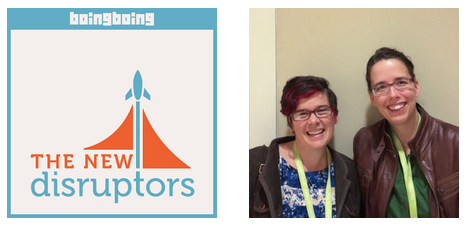
On the right: Manjula Martin & Jane Friedman
This past week, I was interviewed along with my Scratch business partner, Manjula Martin, about the economic realities of writing and publishing during a very transformational time for the industry.
The interview was for an episode of an hour-long podcast by BoingBoing, The New Disruptors, hosted by Glenn Fleishman. I’ve pasted a few show notes below, to give you an idea of the wide-ranging territory we cover. Click here to find out more and listen.
Things mentioned in the episode:
We talked about a bunch of ways in which people can get paid as journalists by patrons and supporters, including Patreon, Beacon, and Tugboat Yards.
You can watch Ira Glass’s short series on storytelling.
There are a ton of electronic publishing platforms, which include29th Street Publishing, TypeEngine, Glide, and Creatavist. Medium is a blogging platform, an independent producer of journalism, and a partner to existing publications, like The Magazine . It also purchased MATTER , which now publishes its articles for free reading. Richard Nash has his finger on the future of publishing, and is now working with Byliner.
Nicole Cliffe of The Toast; Dan Kois, a senior editor at Slate; and Alexis Madrigal, senior editor at the Atlantic spoke to Scratch about what they pay writers.
Harlan Ellison says, “Pay the writer!“
The post The Economics of Writing & Publishing in the Digital Age appeared first on Jane Friedman and was written by Jane Friedman.
March 6, 2014
A Most Audible Alarm: ACX Chops Royalties
Table of Contents
The White Noise of Falling Royalty Rates
Ask the Question, Give No Answer
Difficult Interpretations: “Not Your Friend”
The White Noise of Falling Royalty Rates
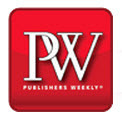 In Audible Lowers Royalty on Self-Published Audiobooks, Publishers Weekly announced it this way:
In Audible Lowers Royalty on Self-Published Audiobooks, Publishers Weekly announced it this way:
Up until now, Amazon was offering an escalating rate of 50%-90% on ACX titles sold exclusively; now it is dropping the rate to a non-escalating 40%. (ACX audiobooks distributed non-exclusively are dropping to a non-escalating rate of 25%.)
As if the winter wasn’t cold enough, you could feel a new chill hit the headsets. PW was following our good colleague Laura Hazard Owen at GigaOM, who took the time to point out that ACX (for Audiobook Common Exchange) has been undergoing its own evolution parallel to publishing’s:
At its launch in 2011, ACX was geared toward professional authors and publishers; Random House and HarperCollins posted books on the rights exchange, for instance, and Random House CEO Markus Dohle praised Audible in the official release for being a “great [advocate] for the audiobook consumer experience.”

See? Laura Hazard Owen looks exactly as she did before the baby.
Boy, am I glad Owen’s back from maternity leave. She was missed. I finally prevailed on her to leave the kid a loaf of bread and a jar of peanut butter.
In Amazon-owned Audible lowers royalty rates on self-published audiobooks, she’s teasing out an important element of the news of Audible‘s change royalty-and-bounty structure changes:
Audible has increasingly geared ACX toward self-published authors and has begun to describe audio rights in terms of being “liberated” from traditional publishers: Its homepage, for instance, features bestselling self-published author Hugh Howey and mentions that Neil Gaiman used ACX to “liberate audio rights.” There’s also paranormal romance author Marta Acosta, who “wrestle[d] back her audio rights” from her publisher when “technology gave a giant kick to the backside of the publishing world and Audible.com burst onto the scene.” And self-published author Bob Mayer notes, “[W]hen I compare my ACX sales to my royalty statements from a few of my books that are still controlled by a Big 6 publisher, there is no comparison in sales, just as my indie eBook sales outsell my Big 6 eBook sales.”
She’s describing how ACX has positioned itself as an enabler of rights “liberation” for entrepreneurial authors…only to then yank half the rug out from under them by dropping royalties of up to 90 percent down to 40 percent.
She’s also talking about bonding, the kind of loyalty and fondness that smart branding and good service are meant to generate in customers, the kind of allegiance so beautifully created and capitalized on by ACX’s parent, Amazon.
Many, many authors have been thrilled with the ACX program.
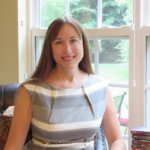
Elizabeth Spann Craig
I remember cozy mystery specialist Elizabeth S. Craig, for example, doing extensive blog entries last year on her experience in starting to work with ACX. In almost every element of the process, Craig seemed pleased and surprised to find how workable it was to audition voice actors, and with the plan that allows those actors to work initially without pay in exchange for a royalty split — which now may be worth a lot less.
In October, Craig’s Updates on ACX and Goodreads, Thoughts on Freebies was upbeat:
ACX—Still steady income for the $0 I put into the process. Readers are requesting that more books go to audio (several readers wrote that they’re losing their eyesight and can only “read” via audio).
But as the Publishers Weekly story had it:
The move, Amazon said in the post, which takes effect March 12, 2014, will, in part, encourage authors to become more aggressive marketers. With the drop in royalty rate, for authors selling their audiobooks exclusively, Amazon has bumped up its “bounty” program. The bounty is the amount awarded to the author (or royalty earner) whenever an audiobook is the first purchase of a new ember of the organ. Previousy the bounty was $25 and now it is $50.
Existing projects will retain the older royalty structure. New projects “on and after March 12, 2014″ will come under the new regime.
Lowering royalties will "encourage rights owners to be more aggressive marketers?" Why would less $=more marketing? http://t.co/YDYE7xASVC
— Fox Hollow (@FoxHollowPub) February 28, 2014
Ask the Question, Give No Answer
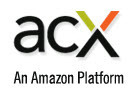 On the ACX announcement page for all this, Important Update Regarding ACX Payments, the company unfortunately does that thing corporates do so well — asks a question and then doesn’t answer it. I’ll show you — question and then answer:
On the ACX announcement page for all this, Important Update Regarding ACX Payments, the company unfortunately does that thing corporates do so well — asks a question and then doesn’t answer it. I’ll show you — question and then answer:
Q. What is the reason for this change?
A. We’re really proud of the innovations ACX has pioneered, including our aggressive payment structure and royalty sharing programs—and we are especially proud of the number of ACX audiobooks earning growing royalties. We are committed to continuing our record of innovation and creating and expanding opportunities for more rights holders and producers in 2014—both current users and those new to the service. Furthermore, we want to encourage Rights Holders and Producers to promote their audiobooks with the increased bonus payment from $25 to $50 (or from $12.50 to $25.00 on Royalty Share deals).
Nope, it’s not you. The corporati are at work. Somebody has vetted all good sense right out of that Q&A. They strictly do not answer the very question they’ve put to themselves. They asked, on the readers’ behalf, what the reason is for the change in royalties, right? Instead of answering, they proclaimed their pride in their innovations “including our aggressive payment structure and royalty sharing programs”—the very “aggressive payment structure and royalty sharing programs” they now are rolling back.
Want to see why this sort of slight of ham-handed non-speak backfires on you?
Still a lot higher than leg publishers, but Amazon’s Audible ACX audiobook publishing platform is lowering royalties
http://t.co/hmaOm9VjKA
— Barry Eisler (@barryeisler) February 28, 2014
Difficult Interpretations: “Not Your Friend”

Chuck Wendig
Here’s Chuck Wendig, getting himself into the Ether once more, busy guy, with Diversify Your Publishing: Why Amazon’s ACX Royalty Change Matters. He writes:
Amazon is not your friend, author person.
Amazon is a giant corporation. It serves itself. You might think, It serves its customers, which is only true in that to serve itself it generally has to serve its customers. And this is entirely fine and normal. To reiterate: Amazon is not your friend. Its job is not to be your friend. Amazon is a great disruptor. Amazon is a powerful business. Amazon has done wonderful things for the World Of Books. Hell, I love Amazon Prime. I love that I can order chimpanzee chow, 9mm ammo, and drill bits at 3AM in the morning and have them in two days (though, hey, Amazon — your Prime shipping times are slipping, just between you and me). Amazon is also the publisher of some of my young adult books through its imprint, Skyscape. My experience there has been wonderful. Great editors, great attention, strong promotion, and they give me input and allow me to have control over the work and input over things like the cover. Amazon does a lot of cool things.
Amazon is still not my friend. Nor is it yours.
This is how the battle of public opinion is lost. You’re watching it in action. You’re reading Wendig (without a single curse word, I think he’s ill) show you exactly where trust and high regard for a company goes when it makes a move of this kind. Can this possibly be good business?

Hugh Howey
Well, speaking of guys who get themselves into the Ether a lot, Hugh Howey is one of the most successful of Amazon’s self-publishing authors, at least three times a Kindle Million Seller. In the past, he’s been an outspoken proponent of Amazon.
Now? Here you go:
Personally, I’m shocked that Amazon would do anything to fuel the speculation that once they grow big enough, authors will suffer. Whatever margins they hope to improve by this 10% move can’t possibly be enough to cover the damage they’ve caused in public relations or the power they’ve granted to their detractors.
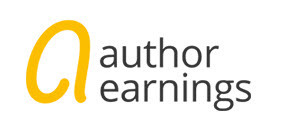 The piece in which he’s writing that is called ACX Lowers Royalty Rates and is housed at Howey’s new AuthorEarnings.com site on its blog page.
The piece in which he’s writing that is called ACX Lowers Royalty Rates and is housed at Howey’s new AuthorEarnings.com site on its blog page.
Some in the industry still are eager to dismiss Howey as a fine author with a good heart and an empty head for business.

Mike Shatzkin
Just this week, Mike Shatzkin has a rich, widely gathered piece out with the Economy Comfort leg-roomy headline, Declarations and forecasts of Great Change in the book business need specificity to be useful and often do not provide it. It’s a good write, I hope you’ll read it, take your time with it, learn from it.
And in it, you see him write:
Generalizations about the book business, whether they come from a self-publishing author or an industry expert like [Brian] O’Leary, really require us to do a little parsing to make them useful.

Brian O’Leary
He’s right. And he’s referring, by the way, about Brian O’Leary’s fine essay for The Bookseller contest (which is basically a competition for writing about Great Change).
It was run at The FutureBook site here: Publishing has entered a new and different era. I hope you’ll read it, too. O’Leary actually goes after the Great Change predictors in his own, incisive way, arguing that you’re on shaky ground whether you’re saying “the prevailing supply chain will somehow adjust [and]…look like the past, just that much more digital” or that we’re about to witness “the demise of reading as we know it.” As O’Leary writes:
Neither of these two endpoints makes sense. We’re moving inexorably toward what I have called a “pre-book world”: a living manifestation of the development, refinement and extension of a particular work. At various points, an object – a book or an eBook, as examples – may be rendered, but it will be a subset of a conversation that includes content, comments, annotations, sources and more.
And for my money, Shatzkin then goes on to do a super job of offering three good questions that he (and I) would like to see placed front and center each time someone declares a Great Change, as he terms it, is nigh-ish. Everybody should have to bullet these points right up at the top. How do we get a law passed about this? Here they are, for when you’re about to write your next Great Change piece, quoting Brother Shatzkin:
(1) “Which books might be affected?”
(2) “How soon can we expect a meaningful change in the perceived utility, and therefore the demand, for the affected books?”
(3) “How likely is it that whatever the Great Change is going to be that publishers are well-positioned to affect or control or accommodate it?”
So ACX/Audible is now dropping their royalties from a max of 90% to flat rate 40%. Can no one provide a viable alternative? Seriously?…
— Josh Lanyon (@JoshLanyon) February 27, 2014
Howey’s piece came out before Shatzkin’s. So I’ll just hit those three rightful questions from Shatzkin for you, no extra charge, using what Howey has written.
(1) Which books might be affected by a Great Change represented by the ACX royalties roll-back? Answer: Here’s Howey telling you that we’re talking about self-published audiobooks. Those are the ones that could be affected. Howey writes:
The barrier to entry is high for self-publishing audiobooks. If the VA [voice actor] is paid upfront, costs can exceed $3,000 for a professionally voiced work of 100,000 words. Another way to produce works through ACX involves the VA doing the work for free in exchange for half the royalties received for each sale. A reduction of royalties means it will take longer for the author to pay back the VA in the first case and makes the risk of performing for free much greater in the second case.
(2) How soon can we expect a meaningful change in the perceived utility, and therefore the demand, for the affected books? Answer: We don’t know. Here’s Howey with all the right questions:
It remains to be seen what the result of the reduced rate will be…Will the third type of ACX production — author-recorded — become the new defacto? And will that result in a drop in quality? Will VAs stop auditioning for as many jobs, now that earning out will be more difficult? Will a new distributor emerge, and how will they match Audible’s current distribution network? Will ACX go global in order to make up for the drop in participation by casting a wider net worldwide? Or will the backlash and fears of KDP or CreateSpace following suit with their own reduced royalties cause Amazon and ACX to do an about-face and raise the flat rate to a more reasonable 50% or 60%?

Jason Allen Ashlock
(3) How likely is it that whatever the Great Change is going to be that publishers are well-positioned to affect or control or accommodate it? Well, since this one is about self-published audiobooks, I think we can safely say that publishers (other than ACX/Amazon) are not at all well-positioned to affect, control, or accommodate it. Remember the “bifurcation” of the industry that Jason Allen Ashlock and I like to talk about?
But Howey does have this to say about what is likely ahead in his best estimation:
The result of this will inevitably be less participation in the ACX program. 40% is an odd rate, in my opinion, as authors and VAs are delivering a final product that only needs distribution. The letter announcing the royalty rate points out that the 40% is greater than what most publishers pay, but those publishers also fund the recording and handle all QA and production duties. A fairer move would have been to get rid of escalators and move to a flat 60% royalty rate. Given the higher bandwidth needs of audio, matching the 70% of KDP seems unlikely, but 50% should be the bare minimum for distribution costs. Bookstores take less than this to store and sell physical books.
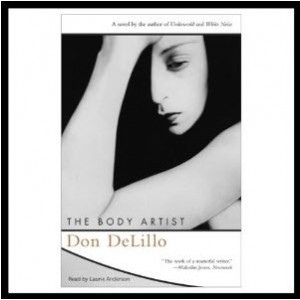 Look, me? I still don’t know why voice actors are called narrators. They don’t narrate a story (which means to tell it), they read it. They’re readers. They read the text aloud. I’m torching for the old term lector. A hundred years ago, lectors stood or sat on raised platforms and read newspapers and entire novels to whole rooms of workers rolling cigars in Florida’s Ybor City as they worked.
Look, me? I still don’t know why voice actors are called narrators. They don’t narrate a story (which means to tell it), they read it. They’re readers. They read the text aloud. I’m torching for the old term lector. A hundred years ago, lectors stood or sat on raised platforms and read newspapers and entire novels to whole rooms of workers rolling cigars in Florida’s Ybor City as they worked.
And as I was telling a friend in the UK last week, if you’ve never heard the lector Laurie Anderson read Don DeLillo’s The Body Artist or the lector Campbell Scott read Henry Miller’s Tropic of Capricorn, you’re missing some of the purest, most translucent oral interpretations of literature out there.
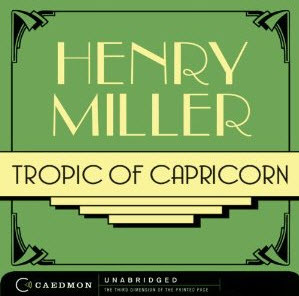 Almost as abruptly as fax machines surrounded us, audiobooks have become a significant element of the marketplace of literature. And not as abruptly but even more profoundly, ACX’s parent Amazon has become a fabulously prominent force in publishing. When such a big player makes such a substantive move in such an important format, everyone is right to stop, look, and listen.
Almost as abruptly as fax machines surrounded us, audiobooks have become a significant element of the marketplace of literature. And not as abruptly but even more profoundly, ACX’s parent Amazon has become a fabulously prominent force in publishing. When such a big player makes such a substantive move in such an important format, everyone is right to stop, look, and listen.
On some days in this disruption, awareness of the shakes is all we have. I wish you lots of it.
And I wish you’d tell me what you think it means — or doesn’t mean — that ACX’s rates for royalties and bounty payments have been adjusted as they have. Drop a line here in comments.
No, literary publishing isn't over, things weren't better in 1980s and good writers will survive! Observer on writers http://t.co/OB3tt60byD
— Jonny Geller (@JonnyGeller) March 2, 2014
Main image – iStockphoto: LJupco
The post A Most Audible Alarm: ACX Chops Royalties appeared first on Jane Friedman and was written by Porter Anderson / @Porter_Anderson.
March 3, 2014
A Collaborative Novel Is Twice the Work, Not Half the Work

Beth Ann Fennelly / photo by Jon Cancelino
In an essay about writing a novel with her husband, Beth Ann Fennelly discusses that the process did not lead to fighting, but that it was fun, and not as lonely. However, it didn’t mean half the work. It meant twice the work. She writes:
That’s when the novel really started cooking—and finally became fun to write—when we adopted the method we termed the “dueling laptops,” writing side by side on the same passages at the same time, then reading aloud and discussing and jointly moving forward. This is clearly not the most expedient route … but it was a wild new kind of work, a work which takes the other’s half, and raises it by half.
Read the entire essay over at this month’s Glimmer Train bulletin.
Also in this month’s bulletin:
The Ability to Desire a Thousand by Courtney Sender
If Something’s There by Andrew Porter
The post A Collaborative Novel Is Twice the Work, Not Half the Work appeared first on Jane Friedman and was written by Jane Friedman.
February 27, 2014
Another Leap of Hybrid Faith: New Publishing Routes
Table of Contents
Swendson: “Upside the Head With the Clue Stick”
Nelson: “We take the risk”
Alternative History
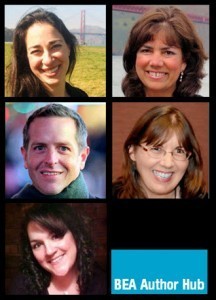 H.M. Ward Joins BEA’s uPublishU Author Hub (and you can, too!)
H.M. Ward Joins BEA’s uPublishU Author Hub (and you can, too!)Grab a space alongside these charter members of BookExpo America’s all-new uPublishU Author Hub for entrepreneurial authors: Bella Andre, Barbara Freethy, Hugh Howey, CJ Lyons and H.M. Ward.
Network with these writers and other publishing players on the trade show floor.
Basic membership includes your BEA badge, uPublishU Conference access, the New Title Showcase, BEA Show Planner, and Mobile App listings. Premium membership gives you a dedicated meeting table and chairs in the Hub and a BEA Autograph Signing session.
For info and registration, contact Fred Evanko: 203-840-5965 or fevanko@reedexpo.com
“Upside the Head With the Clue Stick”

Shanna Swendson / Photo by Julian Noel
Shanna Swendson, author of the Enchanted Inc. series of books, is working what some authors might consider near-magic in a transition from traditional publishing to self-publishing.
And being professionally bewitched seems to be growing on her.
Those who know that Swendson lives and works near Dallas will appreciate one of her book titles, Don’t Hex With Texas. That play on the state’s “Don’t mess with Texas” slogan is part of the Enchanted Inc. story of Katie Chandler, a heroine “so normal that she’s immune to magic.”
Don’t Hex With Texas is one of the quartet of books in Shanna Swendson’s Enchanted Inc. series published by Random House’s Ballentine Books.
It’s the fourth book in the series. It almost was the last. Random House’s Ballentine Books had gone that far before declining to go further with the series.“I had one more book planned” in the series “to close out the story arc,” Swendson says.
But she had nowhere to go with it. Until her Japanese publisher stepped forward and asked for it.
Swendson’s agent, Kristin Nelson of Denver=based Nelson Literary, “had to say, ‘Well, I don’t think she’s written the fifth book yet.’
“But I decided to do that book. Self-publishing? Wasn’t a glimmer yet.”

Don’t Hex With Texas in its Japanese Edition / Special thanks to Becky Taylor
The Japanese publisher asked for a sixth Enchanted Inc. book. And then Swendson offered a seventh to build out the series. So it is that Nos. 5, 6, and 7 were being published overseas but not in the States.
And somewhere in there, “that’s when Kristin started the water torture.”
“It took me about two years to convince Shanna to digitally publish on her own the continuing books in the series,” water torturer Nelson says. “She didn’t like the stigma attached to self-publishing. I finally asked her, ‘Is that stigma worth passing up $5,000 a month in earned income?’
“That’s when she decided to jump in with the books she had already written.”
Swendson’s version: “Kristin hit me upside the head with the clue stick.”
I first heard this story in October when Nelson was on our CONTEC Conference Town Hall panel at Frankfurt Book Fair on the impact of self-publishing on traditional publishing. Ether host and Virginia Quarterly Review (great new redesign) web editor Jane Friedman wrote a top-notch account of the panel in Frankfurt, Is Self-Publishing the Most Important Transformation in the Publishing Industry?
Nelson offered Swendson’s story to the panel as an example not only of how a traditionally published author may struggle to make a decision in favor of self-publishing, but also of how that decision might be seen to impact traditional publishing: books that might have been produced profitably by a publishing house are produced, instead, by the author, herself.
Swendson is a remarkably thorough thinker about her career and how to handle it. A delightful conversationalist with a quick laugh, her comments carry with them the voice of her blend of women’s fiction and fantasy…and that means, of course, you’re hearing a hard sell to publishers in a market that traditionally likes its genre characteristics drawn in bold, bright lines.
“That’s the all-or-nothing mentality,” she says, that can cause publishing “to glut the market.
“In self-publishing, you don’t run into that effect of everything being the same” as you might when publishing’s pile-on syndrome occurs to follow a trend. And in online sales, she adds, you can classify books with more than one categorization—”unlike in bookstores, where your book can only sit on one shelf.”
A new series she’s beginning to work on with Nelson, she says, is “women’s fiction with a fantasy element? Or fantasy with a women’s fiction element? It’s more about the Celtic legend of fairies than Disney-wingy fairies.”
And Nelson ratifies what Swendson is saying about a self-publisher’s comparative flexibility in marketing material that doesn’t niche easily:
When a work doesn’t fit solidly in a genre, it can be hard for a traditional publisher to publish simply because it has to be shelved somewhere. And they want clear parameters for how to market it. With Shanna’s work, she’s solidly on that line between women’s fiction and fantasy. She has a solid fan base that loves her Enchanted Inc. series. And they are going to love her brand new series that’s in that same sweet spot for her audience. They don’t care what genre we call it.
And this time, the non-Disney-wingy flight into self-publishing isn’t quite so daunting because she’s experienced the help of something called the NLA Digital Liaison Platform.
That would be Ms. Clue Stick at work with Nelson Literary’s own program of supported self-publishing for clients.
"Other than that, Mrs. Lincoln…" RT @PublishersLunch: Nook has eliminated 190 positions "through reduction and attrition"
— Don Linn (@DonLinn) February 26, 2014
“We take the risk”

Kristin Nelson
“To be clear, NLA Digital is not a publisher.” Kristin Nelson is careful to get that point across early on in talking about the agency service she’s formalizing this week with a new Web site, NLADigital.com.
“Our author clients,” Nelson says, “do not grant us rights. They maintain full control of their rights and intellectual property. However, what we do offer is a platform that fully supports them in an endeavor to indie publish. “
Lori Bennett is Nelson’s Seattle-based colleague at the agency on all things digital, overseeing the development of the platform.

Lori Bennett
She stresses that the Web site is brand-new—as in work-in-progress new—and perhaps won’t have everything in place quite yet as we get this early look.
Clients pictured on the site include Swendson, Barbara Freethy, Hugh Howey, Courtney Milan, Allison Winn Scotch, plus Jack and Jasinda Wilder.
Nelson outlines two specific tracks for clients using NLA Digital, distribution-venue-only and full-service:
Clients can use the distribution-venue-only option [to] share their files and we simply publish the titles in outlets they currently don’t have access to for a commission. This mostly translates into library outlets such as Overdrive, 3M, Ingram, and Baker & Taylor as well as POD.
Then there is the full-service option [which Swendson uses]. In this track, we are a full partner with the author on cover art, copyediting, converting of files, publishing the work on all venues available, etc. All for our commission. Some authors really aren’t interested in navigating all the fine details of indie publishing so they love working with us.
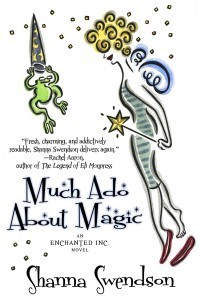
The self-published Much Ado About Magic, fifth in the seven-book Enchanted Inc. series, has the same cover artist, Nina Berkson,used by Ballentine Books for the four original novels.
Nelson tells me she the agency has 17 clients currently using NLA Digital platform.
The costs are shared by the agency and the client, with the agency making the initial outlays. “In the full service option,” Nelson says, “NLA Digital fronts all costs and the author reimburses us for half of those costs via the royalties they earn. This way money always flows to the author. And if we don’t recoup the costs, then we don’t. We take the risk.”
As Swendson notes, one of the great advantages to an author in such a service as NLA Digital is its catalog of books made available to library distribution services—one of the most challenging sectors for a self-publishing author to get into.
And in a particularly interesting observation, she says that working with Nelson’s NLA Digital platform “is a lot like working with a publisher, only when it comes time to make a decision, it’s mine, the buck rests with me.”
In the three self-published Enchanted Inc. series books, for example, Swendson says, “We could hire the same copy editor and cover designer” that Random House had used, so the look and feel artist Nina Berkson developed for the series plays out seamlessly in the final three books, the self-published trio.
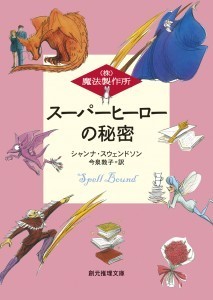
Kiss and Tell in its Japanese edition as Spell Bound / Special thanks to Becky Taylor
A distinction in working with NLA Digital? — “The decision on cover art and all was up to me,” she says.
That’s more control—and more responsibility.
But in a very nice compliment to Nelson, Swendson says her agent is such a good developmental editor that “I hear Kristin’s voice in my head now as I write” guiding her on various points.
“Tell Shanna thank you!” Nelson says, but clarifies that developmental editing isn’t her key priority.
“For several of my authors, when they were with traditional publishers, the editors were overwhelmed so I ended up doing most of the editing anyway. Trust me, it’s not my preferred method of working! I want my client to have a great editor partner. That’s the way it should be and for 95 percent of the time, that is true.”
Another rejection to shame and inspire in equal measure pic.twitter.com/lNPjbghVhq via @pauljmcgann
— Jonny Geller (@JonnyGeller) February 26, 2014
Alternative History
All is not self-publishing, even now, for Swendson.
Both she and Nelson are proud to tell you that her debut YA novel, Rebel Mechanics, is to be released by FSG Books for Young Reasons and the Margaret Ferguson Books imprint.
Set in the late 1800s, the piece is what Nelson describes as “a YA alternative history steampunk setting” in which the American Revolution “hasn’t happened yet. The British ruling class have magic and control New York but the rebel Americans have steam technology.”
The steam of self-publishing’s stigma can still fog up a writer’s viewpoint, too, Swendson says.
“There are still a lot of media venues that don’t take you seriously” as a self-publisher, “and don’t even want to talk to you” when it comes to review requests. ”They still treat you like the little old lady who published a book of poems about her cats and is wondering why the newspaper won’t do a story about her.”
Therefore, for her new series, the one with the Celtic legendry?
“Shanna wanted to explore traditional options,” Nelson says, “so we did.” In an interesting agent-eye’s-view on industry procedure, she adds:
Half the editors who have the novel still haven’t gotten back to me and I submitted it this past summer. This, despite repeated follow-ups on my part. That’s really egregious. If an editor doesn’t have time to read, just decline looking at the submission. Leaving an author in limbo is not good business.
Well, that new series may well be traditional publishers’ loss anyway, Nelson says, at least at the outset:
Shanna just emailed me this week and she said she would prefer to indie-publish.
For context, it took me two years to convince her to indie-publish those Enchanted Inc. novels she already had written. Now it’s 18 months later…[and she] has changed her mind.
The message on the email from Swendson, Nelson says, “joked that I shouldn’t fall off my chair at this decision.”
Everybody loves the idea that readers are "in control" until they turn out not to be docile consumers and do "irrational" things. #cluetrain
— Guy L. Gonzalez (@glecharles) February 24, 2014
 H.M. Ward Joins BEA’s uPublishU Author Hub (and you can, too!)
H.M. Ward Joins BEA’s uPublishU Author Hub (and you can, too!)Grab a space alongside these charter members of BookExpo America’s all-new uPublishU Author Hub for entrepreneurial authors: Bella Andre, Barbara Freethy, Hugh Howey, CJ Lyons and H.M. Ward.
Network with these writers and other publishing players on the trade show floor.
Basic membership includes your BEA badge, uPublishU Conference access, the New Title Showcase, BEA Show Planner, and Mobile App listings. Premium membership gives you a dedicated meeting table and chairs in the Hub and a BEA Autograph Signing session.
For info and registration, contact Fred Evanko: 203-840-5965 or fevanko@reedexpo.com
Main image – iStockphoto: OStill
The post Another Leap of Hybrid Faith: New Publishing Routes appeared first on Jane Friedman and was written by Porter Anderson / @Porter_Anderson.
February 26, 2014
10 Apps to Help You Stay Focused on Your Writing

Photo by Daniel Y. Go / via Flickr
Today’s guest post is by Frances Caballo (@caballofrances), a social media strategist and manager for writers, and the author of Avoid Social Media Time Suck, among other titles.
Inspiration is the windfall from hard work and focus. Muses are too unreliable to keep on the payroll.
—Helen Hanson
As authors, we love to read, write, and talk about our stories. But as we sit to string words together, there is always the temptation of a distraction.
Maybe it’s a cup of licorice tea you want—again. Or a podcast from Fresh Air that is tempting you. Isn’t now, when you have this time set aside, the perfect time to tackle those items on your to-do list?
Many of us wedge writing into the tight spaces of our lives. We rise before the sun breaks the horizon, work all day, and interact with our families in the evenings. We promise ourselves that we will write every morning at four, write for two hours, pursue our passion, live our dream, and let the stories run wild on the page.
It sounds doable, right? But it’s never as easy as it seems.
Many of us start with the best of intentions. We set our alarm clocks, awake with little eagerness, and harness ourselves to our computers. Ah, the computer. Now there’s another source for many of our digressions.
Tools to Keep You Off the Net
If Facebook or Twitter easily diverts your attention when trying to write, don’t worry. These tools can help.
1. Anti-Social
It’s said that Jonathan Franzen obliterated the Ethernet card in his laptop and locked himself in a drab room to avoid distractions that would divert his attention away from his manuscript. But he could have used Anti-Social instead. This tool will block you from your own temptations whenever you’re trying to write. This is how it works: Suppose you want to spend the next three hours writing. Just turn on Anti-Social, schedule it for three hours, and you’ll be blocked from distracting social media websites. Presently, this application is available only to Mac users.
2. SelfControl
This free application will block you from accessing the websites that distract you the most for a set period that you determine. Until that timer expires, you will be unable to access those sites—even if you restart your computer or delete the application.
3. Write or Die
First, you configure your writing period, word goal, and your preferred punishment should your fingers stop typing. Once the setup is complete, you’ll need to type continuously; otherwise, there will be consequences. In case you’re wondering what those consequences might be, here they are:
Gentle Mode: A certain amount of time after you stop writing, a box will pop up, gently reminding you to continue writ- ing.
Normal Mode: If you persistently avoid writing, you will be played a most unpleasant sound. The sound will stop if and only if you continue to write.
Kamikaze Mode: You will need to keep writing or your work will unwrite itself. That consequence should keep everyone on track.
4. StayFocusd
This is a free Chrome extension that will help you to stay more focused on your writing by restricting the amount of time you spend on distracting websites. Let’s say you decide that you want to spend a maximum of forty-five minutes on social media day. Once you use your allotted time, you will be blocked from social media for the remainder of the day.
5. WriteRoom
This tool won’t keep you off your social media networks, but it will keep you more focused. Available from Apple’s App Store, WriteRoom is designed to be an alternative to Microsoft Word. The program allows you to write, but you can’t add formatting or insert screenshots. All you can do is write, and sometimes that’s exactly all we need to do.
Create an Atmosphere to Be More Efficient
Now that you are locked out of your Facebook account, maybe all you can do is stare at the blank page in front of you. Some studies suggest that what you need now is some background buzz. The two applications below are designed to help you loosen your writing muscles.
6. Coffitivity
According to research, it can be more difficult to be productive in a quiet space. That is why some people get more writing done in the middle of Starbucks. This app will create a background of coffee shop sounds to soothe you into your sweet spot of writing. It claims to produce the perfect mix of calm and commotion. This app is available for the iPad, iPhone, and Mac in the iTunes store for $1.99.
7. Songza
This website offers an array of music for whatever your mood might be. If you want to chill, try Mellow Indie. If you prefer popular songs, click on Today’s Biggest Hits. If you don’t want to hear any lyrics, click on Cool Jazz for Warm Nights or Ambient and listen to the sound of birds chirping and waves washing ashore. There’s music for every taste here.
How to Beat the Block
The house is empty, you have a steaming cup of tea next to your keyboard, and you’re ready to start writing. But there’s a problem. You don’t know what to say in your next blog post. Or perhaps you don’t know how to start the next chapter of your novel or end a story you started a week ago. Here are some applications that will help you get your writing started.
8. Writing Prompts and Character Prompts
The Writing Prompts app claims that it will come to your rescue with its database of 600 writing prompts. Meanwhile, Character Prompt will offer you 19 profile characteristics, thousands of character twists, and 150 questions to help you develop your characters. Various versions of these two apps range from $1.99 to $4.99 and are available for Apple, Android, and Kindle devices.
9. Writer’s Block Buster
This is another application that will help to crumble your writer’s block into little pieces and leave you with a vision of where your characters need to go. It also has a clever feature that will allow you to keep track of your characters, places where they live or travel to, and other scenarios. In addition, it assists with character and plot development, dialogue, and the mechanics of writing. All these features come for the price of $3.99.
10. Creativity Portal’s Imagination Prompt Generator
The imagination prompt provides prompts for starting a fictional story. This app is part of the Creativity Portal, which will suggest ideas for creative projects. Creativity Portal also has other applications in its portfolio, including The Story Starter and Writing Fix. If you’re a teacher, Writing Fix also suggests ideas for how to teach different aspects of writing.
Do you use any applications to help you stay focused on your writing?
The post 10 Apps to Help You Stay Focused on Your Writing appeared first on Jane Friedman and was written by Frances Caballo.
February 25, 2014
Serial Fiction: How It’s Changing Publishing
My latest column at Writer Unboxed tackles serial fiction—and how it’s changing writing, reading, and publishing. Here’s a little snippet:
Both serials and fan fiction have been around a long time (since Dickens, remember?). If these forms are being reinvented and rediscovered because mobile- and tablet-based reading is growing, this may mean the strategic author has to start thinking about their readership as divided between two distinct groups: the very large group that expects the content for free, and the smaller group that’s willing to pay.
This is a very in-depth report that includes interviews with the people who work at Wattpad and Amazon, and also features several authors who have been successful with serials. Click here to read the piece at Writer Unboxed.
The post Serial Fiction: How It’s Changing Publishing appeared first on Jane Friedman and was written by Jane Friedman.
Jane Friedman
- Jane Friedman's profile
- 1882 followers



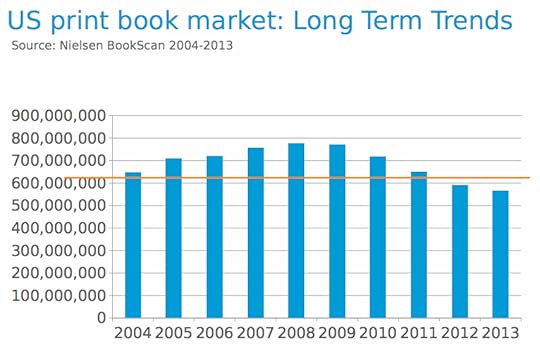
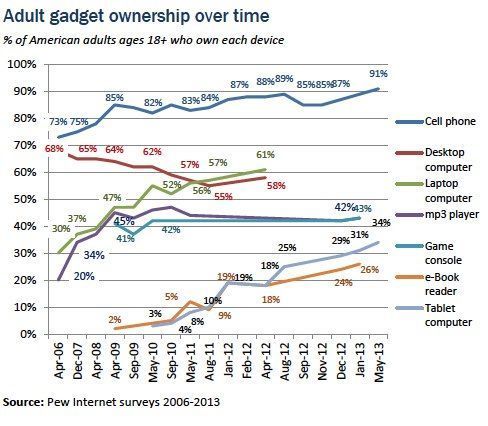
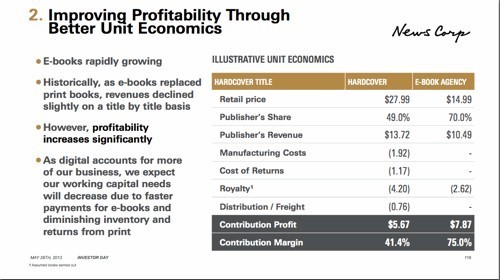

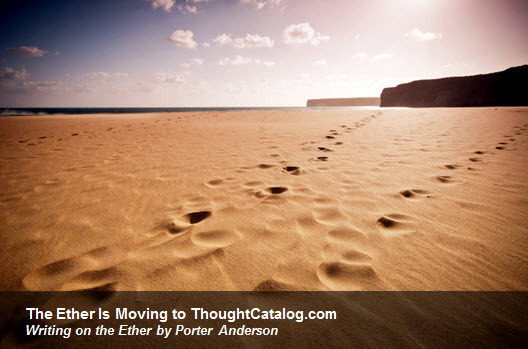
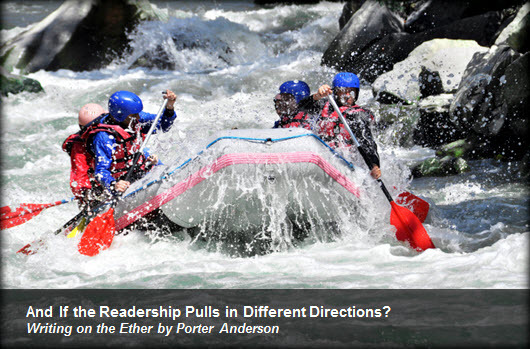
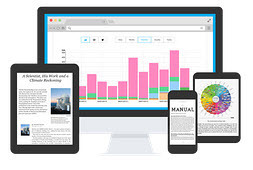
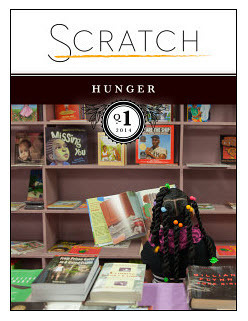

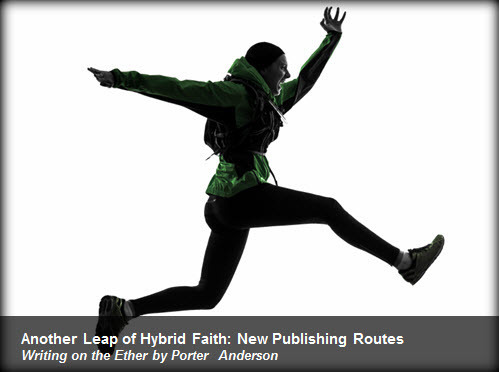
![swen_donth_9780345492937[4]](https://i.gr-assets.com/images/S/compressed.photo.goodreads.com/hostedimages/1393552702i/8730546.jpg)


